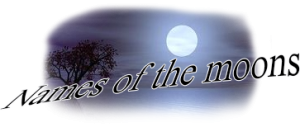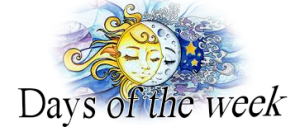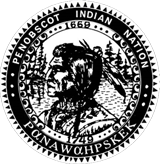Language Resources
The staff strides through multiple programs in the department to preserve the rich culture and history that is so important to the people of the Penobscot Nation. There are ongoing efforts to revitalize the Penobscot language through classes and by making use of new technology.
The Penobscot Cultural & Historic Preservation Department now have the
available on-line with audio.
How to Install and Use the Penobscot Keyboard Layout
Download the Penobscot Unicode Here
1. Installation
– To install the PC (Windows, etc.) keyboard layout, copy the whole folder anywhere onto the computer.
(If it is in .zip format, double-click it to extract the folder.) Open the folder and double-click “setup.exe”
to run it.
– To install the Mac keyboard layout, go from the main hard drive to the “Library” folder, and then find
the “Keyboard Layouts” folder inside it. Copy the “Penobscot.keylayout” file into the “Keyboard
Layouts” folder. (You may need an administrator’s username and password to do this.)
2. Access
– Once installed, the PC (Windows, etc.) keyboard layout can be accessed by pressing “Control” and
“Shift” at the same time. Doing so again swaps back to the regular keyboard. (You can also find the small
keyboard icon in the lower right of the screen, and click between the regular keyboard and “US –
Custom”, which is the Penobscot keyboard. “Control + Shift” is much more convenient, however.)
– Once installed, the Mac keyboard will not yet be accessible. First open “System Preferences” (under the
Apple symbol in the top left of the menu bar), then “Language & Region”, then “Keyboard
Preferences” (at the bottom), then select “Input Sources”. From there, click on the small “+” (= Add)
button in the lower left-hand corner. Skip to the bottom of the list of languages to select “Others”.
Select “Penobscot” and then click “Add”.
Optional but very helpful is to set it up so that pressing ⌘Space (Command + Space) swaps between the
keyboards. To do so, go back and select “Shortcuts” instead of “Input Sources” above. From the list on
the left-hand side (Launchpad & Dock, etc.), go down and select “Input Sources” (yes, same name,
different place), and then check the box that sets up
“Select the previous input source” = ⌘Space
A yellow triangle will warn, “Shortcut already used by another action”. Go down the left-hand list to
“Spotlight” (which now has the same yellow triangle) and uncheck the box there for “Show Spotlight
search field”. The triangle should disappear, and now pressing ⌘Space will swap between keyboards.
You may have to log out and back in (or just restart) in order for the changes to apply. After that, in the
upper right side of the screen you will now see a small U.S. flag. Clicking on it will allow you to select the
Penobscot keyboard. (Pressing ⌘Space will do the same, and switch back, if you have done the optional
step above.)
3. Layout
Both the PC (Windows, etc.) and Mac keyboard layouts follow the same mapping as the original
Penobscot font, except that the old use of /b, x, d, f, u, v/ for double letters /pp, tt, ss, čč, kk, kkʷ/ has
been discontinued, as have been the up and down arrows (↑↓).
The mapping is as follows:
č = c
ə = r
α = z
kʷ = j i.e. /kʷ/ is just to the left of /k/
hʷ = g i.e. /hʷ/ is just to the left of /h/
á = \ (all accent marks are typed AFTER the letter they go on)
a̋ = | (= Shift+\)
à = `
ā = ^ (= Shift+6)
ă = ~ (= Shift+`)
– As capital letters are not normally used in Penobscot, the capitals have been reassigned to letters
commonly used by other North American languages, and/or for technical purposes in Penobscot. Some
examples are below; you can find the rest by holding down “Shift” and exploring around the keyboard.
ʔ = Q
θ = T
æ = A
š = S
– The raised period used in some Algonquian languages (a·) can be accessed by “Shift + Alt + .” on a PC,
and “Option + .” on a Mac.
Calendar Reference
The lunar year consists of 354 days. On average the first moon, or old moon, of the Penobscot calendar began on December 21st, but it could begin anywhere from December 5th to December 30. Every third year Penobscots added a 13th moon, the “inserted moon”. Further adjustment was needed two or three times per century, when the 13th moon was inserted in a second year instead of a third year.

Learn the names of the Penobscot moons

Learn the days of the week in Penobscot

Language Camp 2016
Language Carriers
Carols Corner
Chapter One…Greetings and Introductions
Chapter Two…Things You May Say to a Child
Chapter Three…Things I Say To Mahseyo In The Morning
Chapter Four…Things to Say to a Guest
Chapter Five…Parents and Grandparents
Chapter Six…Family Language
Chapter Seven…Family Language
Chapter Eight…Family Language
Chapter Nine…Family Language
Chapter Ten…Frybread Recipe
Chapter Eleven…Family Language
Chapter Twelve…Akələpemo
Chapter Thirteen…At the first thunder shower in the spring
